We headed off for the Serengeti National Park via a drive
along the Ngorongoro Crater rim. We will
actually descend into the crater as we drive back from Serengeti 5 days hence,
so we
just check out the visitors center at the entrance for now. We stop at the Oldupai Gorge along the way
for a visit to the small museum and a lecture from park staff. Apparently the name we all learned in our
anthropology courses, “Olduvai”, was the result of a typographical error or
misunderstanding by Germans in the first scientific reporting from here. The correct word, “Oldupai”, is the Maasai
word for a plant common in the area, sisal, which can be used to
make
rope. We also learned about the
progression of excavation in the gorge and its geological backstory. Many earlier evolutionary dead ends of our
ancestry were first found here (homo habilis, homo erectus), culminating in the
first homo sapiens, the truly modern man.
Tanzanians are rightly proud of being seen as the birthplace of man, and
they take great care in explaining the history, maintaining a very informative
museum on site, and protecting the overall area. After a box lunch during which we were almost
overwhelmed by hungry little
yellow chickadee-like birds (the lesser masked social
weaver), we were taken down into the original excavation area of the gorge to
the site where Australopithecus man (Zinjanthropus) was discovered by the
Leakeys in 1959 to start things off.
After that, a visit to the little museum ensued and was so fascinating
that Phyllis was late, and last, back to the jeeps for departure.
Onward to the Serengeti National Park, a two-hour drive to
the entrance and then another couple of hours to our mobile tented campsite
(mobile meaning it is moveable, but is fixed
in place for our stay). The drive across the Ngorongoro highlands is
again through Maasai country, who thickly populate this “multiuse” area (kind
of like National Forest lands in the U.S.) because they were transplanted here from
their previously preferred lands in the Serengeti. When Tanzania decided to make Serengeti into
a national park, it had to negotiate with the Maasai to resettle them
elsewhere, and just a little further south into the Ngorongoro highlands was
chosen. We learn that their numbers have
swollen from 400,000 to 1.2 million, not to mention an
even larger number of
cattle, and the government is thinking of relocating them again. (Kind of like the American Indian
story.) It remains to be seen how
accommodating the Maasai will be this time.
But, besides the Maasai and their beloved cattle, we see wildebeest,
zebras, giraffe, and camels along the way.
Yes, camels, due to a government experiment to see how well they perform
for carriage of goods in this environment.
Once we entered the Serengeti gate, we started to see a
greater profusion of game animals, even here along the main (albeit dirt) road
into and through the park. Zebras, Grant
and
Thompson gazelles, hyenas, elephants, cheetahs, jackals, and the Kori
bustard (the world’s largest flying bird) all made an appearance, as well as a
lone ostrich. Whetted our appetite for
things to come.
Our camp, home for the next 4 nights, is composed of wall
tents again, this time just set up on the ground with a 5-gallon bucket for
shower water hanging out back, as well as a bucket gravity-feeding a flush
toilet in our little “bathroom” area of the tent. The shower reminds us of our accommodations
on Shuyak Island back home. Each couple
has a separate tent, and there is a common mess tent in the middle of our
crescent-shaped group, with the support tents (kitchen, storage, staff
quarters) arrayed out back. A path to
each tent has been
scythed in the otherwise tall savannah grass, and again we
are instructed not to venture out of the tents after dark on our own due to the
possibility of unfriendly animals in that tall grass. Hyenas are again a likely suspect, as well as
lions and snakes. Also, apparently
elephants… in fact, when we arrived in late afternoon there was a herd of
elephants in the vicinity to welcome us to what was appropriated called “Tembo
Camp”, tembo being the Swahili word for elephant. (People who repeatedly watched “The Lion King”
movie with their small children have a leg up on all the Swahili words for
animals. Unfortunately Phyllis does not
remember this movie very well.)
A staff of seven at Tembo Camp prepared our hot water for
showers upon our arrival and we then gathered for wine/beer to be followed by
dinner. Just as we began to eat, another
torrential downpour hit, which immediately caused the staff to scatter to be
sure all our tent windows were sufficiently zipped up. After yet another 4-course meal, we all
dashed (escorted) to our tents in between showers to get ready for a 6 a.m.
game drive departure tomorrow. Despite
the heroic efforts and best intentions the staff did miss a few windows in our
tent that we had foolishly left zipped down.
The water that came inside at least missed the beds.

 Serengeti National Park, Tanzania
Serengeti National Park, Tanzania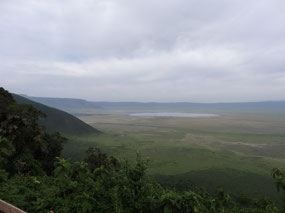
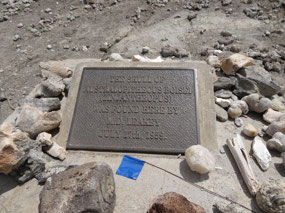
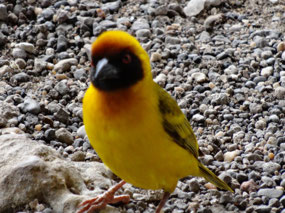
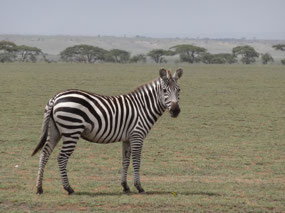
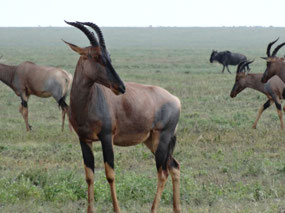
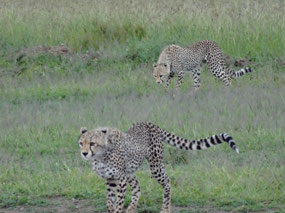
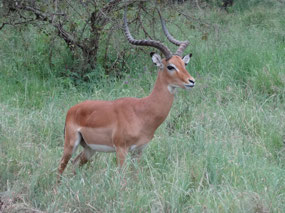
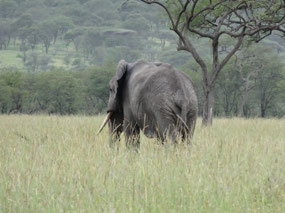




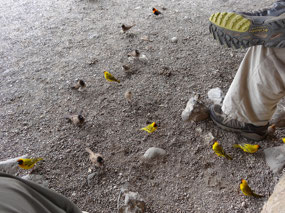
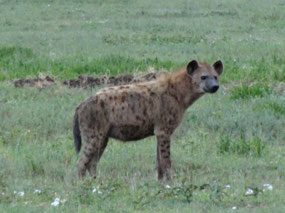
2025-05-23